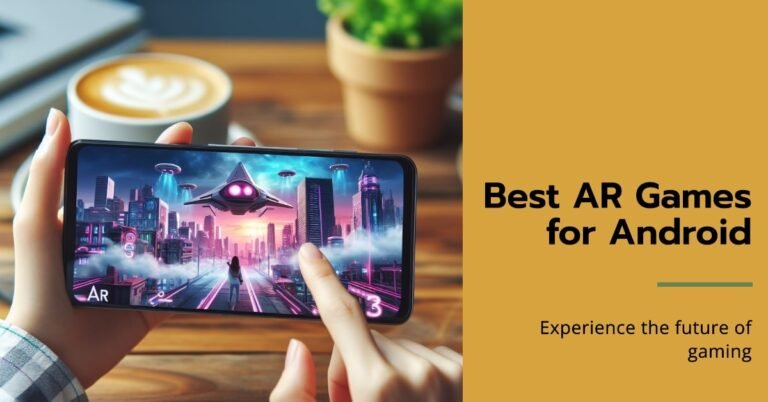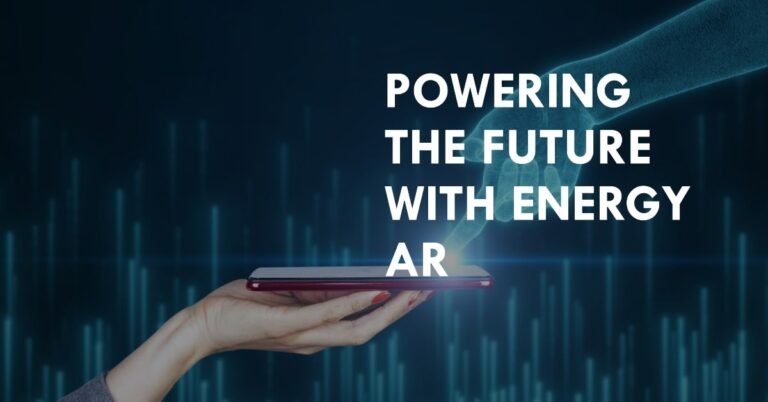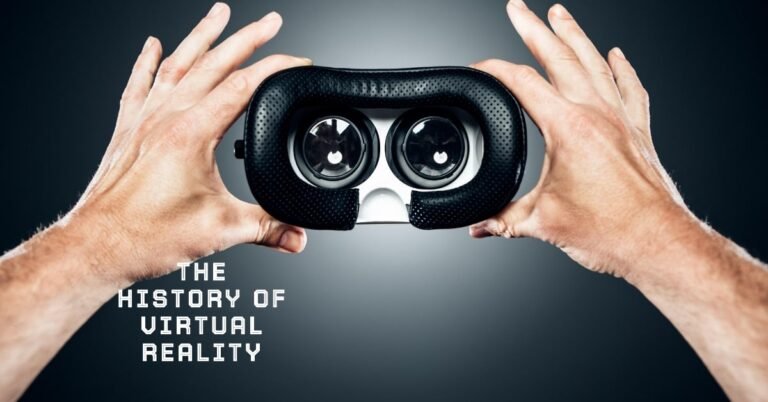AR and VR – Which Is Best For Education?
Imagine dissecting a frog in biology class without the mess, or exploring the pyramids of Giza from your living room. This isn’t science fiction – it’s the power of Augmented Reality (AR) and Virtual Reality (VR) in education. Both technologies are revolutionizing the way we learn, but which one reigns supreme? The truth is, there’s no single “best” – AR and VR each offer unique advantages depending on the subject matter, learning style, and desired outcomes. Let’s dive into the AR vs. VR in education debate to equip you with the knowledge to make an informed decision!
Understanding AR and VR: A Tale of Two Realities
AR (Augmented Reality) overlays digital information into the real world. Think Pokémon Go, where virtual creatures appear in your physical environment through your smartphone screen. In education, AR can bring textbooks to life with 3D models, superimpose historical figures onto classroom walls, or allow students to virtually dissect a frog on their desks.
VR (Virtual Reality), on the other hand, transports users entirely into a simulated environment. Imagine putting on a VR headset and finding yourself standing on the Great Wall of China, or swimming alongside a pod of dolphins in the ocean. VR in education can take students on virtual field trips to historical sites, recreate complex scientific simulations, or provide safe practice environments for medical students.
Which is Best for Education: AR vs. VR?
There’s no one-size-fits-all answer. The best choice depends on several factors:
Learning Objectives:
AR excels at:
- Visualizing abstract concepts: Imagine a chemistry class where students can hold a tablet displaying a virtual molecule, manipulating it to see how atoms bond and react. AR can make the invisible, visible!
- Overlaying information onto real-world objects: In biology, students can use AR apps to scan leaves, identifying different parts and their functions through superimposed labels and diagrams. AR bridges the gap between theory and practical application.
- Encouraging hands-on learning with digital elements: AR can transform history lessons by allowing students to interact with 3D models of historical artifacts, manipulating them to see details and learn about their construction. AR fosters a more active and engaging learning experience.
VR shines in:
- Immersing students in simulated experiences: Imagine a history lesson where students wear VR headsets and find themselves transported to the signing of the Declaration of Independence, witnessing the event firsthand. VR fosters a deeper emotional connection to historical events.
- Providing safe practice environments: Medical students can use VR simulations to practice surgical procedures in a risk-free environment, learning skills and gaining confidence before operating on real patients. VR creates a safe space for experimentation and skill development.
- Fostering emotional connection through storytelling: VR documentaries can transport students to remote locations or historical periods, allowing them to experience different cultures and perspectives. VR can build empathy and understanding.
Learning Style:
- Some students thrive on the interactive nature of AR, manipulating digital objects in the real world and seeing the immediate results.
- Others may prefer the complete immersion of VR, feeling fully transported into the learning experience and absorbing information through all their senses.
- Consider your students’ learning styles and preferences when choosing between AR and VR.
Accessibility:
- AR experiences are often accessible through smartphones or tablets, making them more readily available in classrooms with existing devices. VR typically requires specialized headsets, which can be a cost barrier for some schools.
- Factor in accessibility and cost when making your decision.
Advantages of AR and VR
AR and VR offer a plethora of benefits that go beyond the initial excitement of these immersive technologies. Here’s a deeper look at some key advantages:
Enhanced Engagement and Motivation:
AR and VR can transform passive learning into active exploration. Students become participants in the learning process, manipulating virtual objects in AR or fully immersed in VR environments. This increased engagement can lead to improved motivation, focus, and knowledge retention.
Improved Knowledge Retention:
Learning by doing is a powerful strategy. AR and VR allow students to interact with the material in a hands-on way, solidifying their understanding and promoting long-term knowledge retention.
Development of Critical Thinking Skills:
AR and VR can create complex scenarios that challenge students to think critically and solve problems. For example, a VR simulation could place students in the role of a historical figure facing a difficult decision, requiring them to analyze information and make choices. These immersive experiences foster critical thinking and decision-making skills.
Personalized Learning Experiences:
AR and VR have the potential to personalize learning by catering to individual student needs and learning styles. Imagine an AR app that adjusts the difficulty level of a science experiment based on a student’s progress or a VR simulation that allows students to explore different historical timelines at their own pace. AR and VR can tailor the learning experience to each student, maximizing their potential.
Accessibility and Inclusivity:
AR and VR can break down barriers for students with disabilities. For example, a VR field trip could allow a student with mobility limitations to explore the rainforest canopy, or an AR app could translate text in real time for students with language difficulties. These technologies have the power to create a more inclusive learning environment for all students.
Breaking Down Geographical Barriers:
Imagine a classroom in a rural town taking a virtual field trip to the Louvre Museum in Paris. AR and VR can dismantle geographical limitations, allowing students to explore diverse locations and cultures without ever leaving the classroom. This exposure to the wider world broadens their perspectives and fosters global citizenship.
Fostering Collaboration and Communication:
AR and VR experiences can be designed to encourage collaboration and communication. For example, multiple students could wear VR headsets and work together to solve a scientific puzzle within a simulated environment. These technologies can cultivate teamwork and communication skills, preparing students for the collaborative nature of the workplace.
Overcoming Challenges: Navigating the Roadblocks of AR and VR in Education
Despite their numerous advantages, AR and VR in education aren’t without challenges. Here are some potential roadblocks to consider:
- Cost: VR headsets and some AR equipment can be expensive, posing a budgetary hurdle for schools.
- Technical Difficulties: Setting up and maintaining AR/VR technology can require technical expertise, which may be lacking in some schools.
- Content Availability: While the landscape is evolving rapidly, there may not be readily available AR/VR educational content for all subjects and grade levels.
- Safety Concerns: The long-term effects of VR use, particularly on young minds, are still being researched. It’s important to establish guidelines for safe VR use in educational settings.
- Potential for Distraction: While AR and VR can be powerful learning tools, they can also be distracting if not used appropriately. Educators need to develop strategies to ensure these technologies are used for focused learning.
The Future of Education: A Blended Reality
AR and VR aren’t mutually exclusive. Many educators are exploring the potential of a “blended reality” approach, where both technologies are used together to create a richer learning experience. Imagine a science lesson where students use AR to dissect a virtual frog on their desks, then put on VR headsets to explore the frog’s internal organs in 3D! This blended approach can capitalize on the strengths of both AR and VR, fostering a deeper understanding of the subject matter.
Choosing Your AR/VR Adventure: A Step-by-Step Guide
Ready to embark on your AR/VR educational adventure? Here are some steps to help you decide:
- Identify your learning goals: What do you want your students to achieve? Consider the specific skills and knowledge you want them to gain.
- Consider student needs and preferences: How do your students learn best? Are they kinesthetic learners who thrive on hands-on experiences, or do they prefer visual or auditory learning styles?
- Research available AR/VR resources: Explore educational apps, software, and VR experiences aligned with your learning goals. Look for reputable developers and content creators focused on education.
- Factor in cost and accessibility: Consider hardware costs, software subscriptions, and any technical support needs.
- Start small and experiment: Don’t overwhelm yourself – begin with a single AR/VR lesson and see how it goes! Gather feedback from students and adjust your approach as needed.
Power of AR/VR: It’s All About the Journey
By understanding the strengths and weaknesses of AR vs. VR in education, you can make informed decisions about which technology best suits your needs. Remember, the goal is to create engaging and effective learning experiences that empower students to explore, discover, and reach their full potential. AR and VR, when used thoughtfully and strategically, can be transformative tools on this educational journey. So, are you ready to step into the exciting world of AR/VR learning?
Exploring Real-World Examples: AR and VR in Action
Moving beyond theory, let’s delve into some inspiring real-world examples of AR and VR making a splash in classrooms around the globe!
- AR Brings History to Life: Imagine a history class where students hold tablets pointed at a seemingly blank wall. Suddenly, the wall comes alive with an AR projection of a bustling ancient Roman marketplace. Students can walk around the virtual marketplace, interacting with 3D models of Roman citizens and learning about their daily lives. This is the reality for students at a school in Barcelona, Spain, who are using AR to explore different historical periods in an immersive and interactive way.
- VR Takes Students on a Global Adventure: Gone are the days of flipping through static textbook pages about geography. Students at a school in New Zealand are using VR headsets to embark on virtual field trips around the world. One moment they’re standing on the Great Wall of China, the next they’re exploring the coral reefs of the Great Barrier Reef. VR allows students to experience diverse ecosystems and cultures firsthand, fostering a deeper understanding of our planet’s vastness and wonder.
- AR Enhances Science Labs: Forget the limitations of traditional microscopes! Students at a school in California are using AR apps to explore the microscopic world. By pointing their tablets at prepared slides, they can view magnified 3D models of cells, viruses, and other biological structures. AR provides a dynamic and engaging way for students to visualize complex scientific concepts.
- VR Fosters Empathy and Understanding: VR documentaries are transforming social studies lessons. Students at a school in Canada recently donned VR headsets to experience a simulation of life in a refugee camp. Walking a mile in someone else’s shoes, these students gained a deeper understanding of the challenges faced by refugees around the world, fostering empathy and compassion.
These are just a few examples, and the possibilities are truly endless! As AR and VR technology continues to evolve, we can expect even more innovative and engaging educational experiences to emerge.
Building a Thriving AR/VR Ecosystem: Essential Tips for Educators
Equipping educators with the necessary knowledge and support is crucial for the successful integration of AR and VR into classrooms. Here are some valuable tips:
- Professional Development: Many educational institutions and organizations are offering professional development workshops and courses on AR and VR integration in the classroom. Educators can learn about best practices, explore available resources, and gain the confidence to use these technologies effectively.
- Community Building: Connect with other educators who are using AR and VR in their classrooms. Share experiences, troubleshoot challenges, and collaborate on lesson plans. There’s a wealth of knowledge and support to be found within the educational technology community.
- Student Feedback Matters: Don’t be afraid to experiment and gather feedback from students. What worked well? What could be improved? By incorporating student feedback, you can tailor your AR/VR lessons to maximize their learning potential.
- Start Small and Celebrate Successes: Don’t feel pressured to create a full VR unit plan overnight. Begin with a short AR activity or a single VR field trip. Celebrate your successes, and gradually build your confidence and expertise in using these technologies.
Remember, the key is to embrace the potential of AR and VR while acknowledging the challenges. With thoughtful planning, ongoing professional development, and a collaborative spirit, educators can unlock the transformative power of immersive learning for their students.
The Takeaway: AR and VR – Powerful Tools for the Future of Education
AR and VR are not just passing trends; they represent a significant shift in the way we approach education. These immersive technologies have the power to:
- Spark curiosity and ignite a passion for learning.
- Make abstract concepts more concrete and engaging.
- Provide students with safe and controlled practice environments.
- Foster critical thinking, problem-solving, and collaboration skills.
- Break down geographical barriers and promote global citizenship.
The future of education is undoubtedly an immersive one. By harnessing the strengths of AR and VR, educators can create dynamic and engaging learning experiences that prepare students for the challenges and opportunities of the 21st century. So, are you ready to embark on this exciting educational adventure with AR and VR? The possibilities are limitless!






